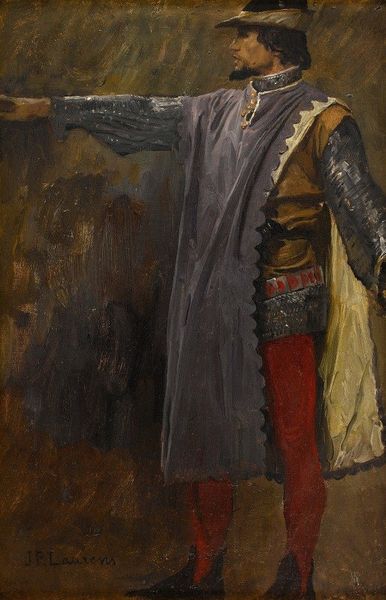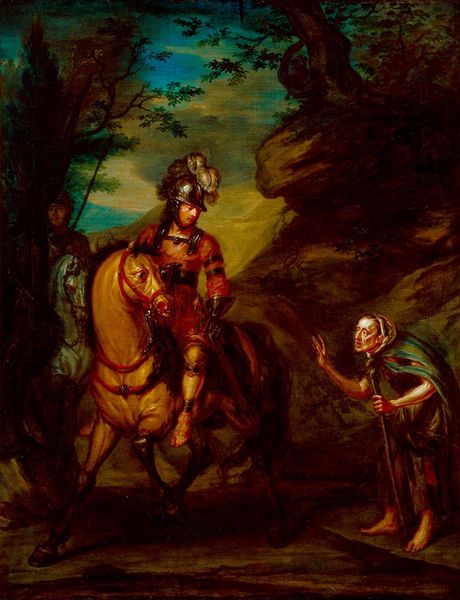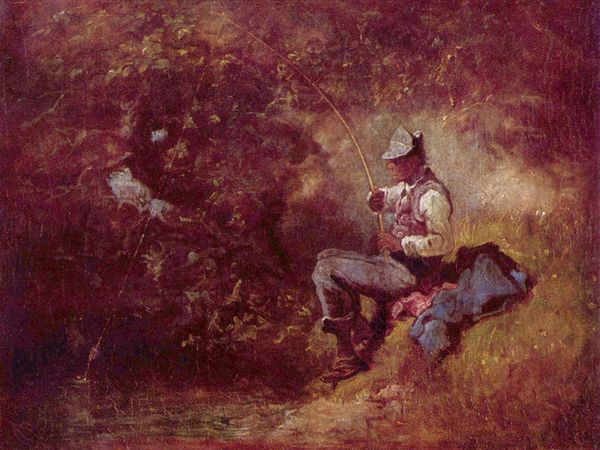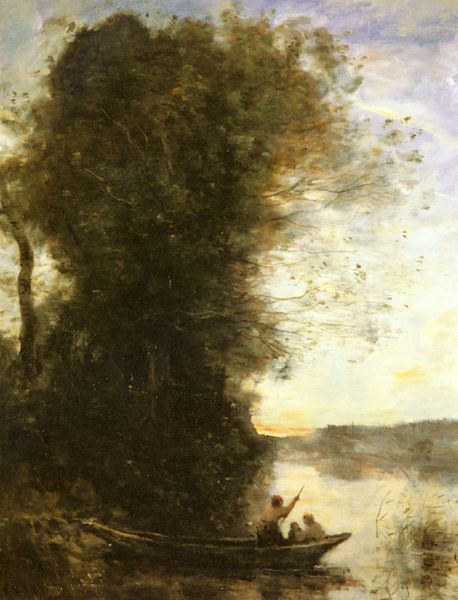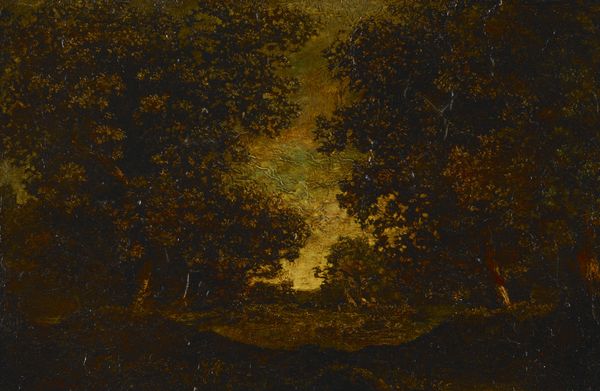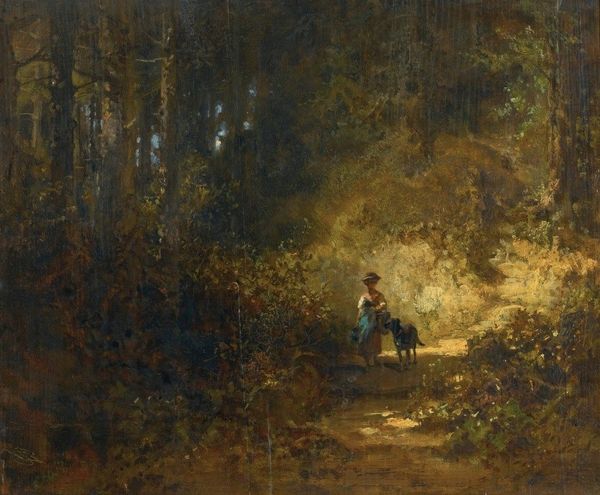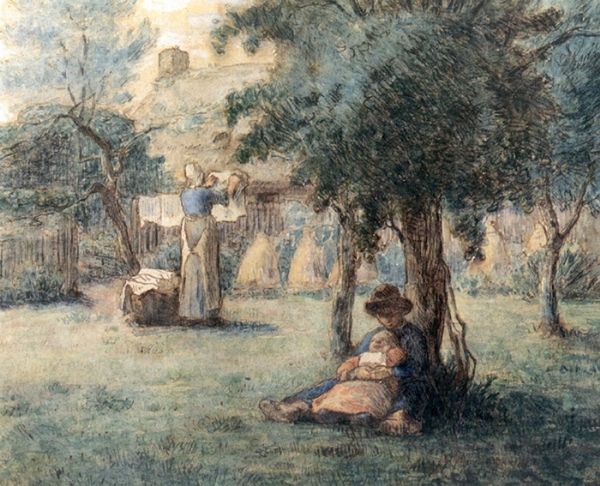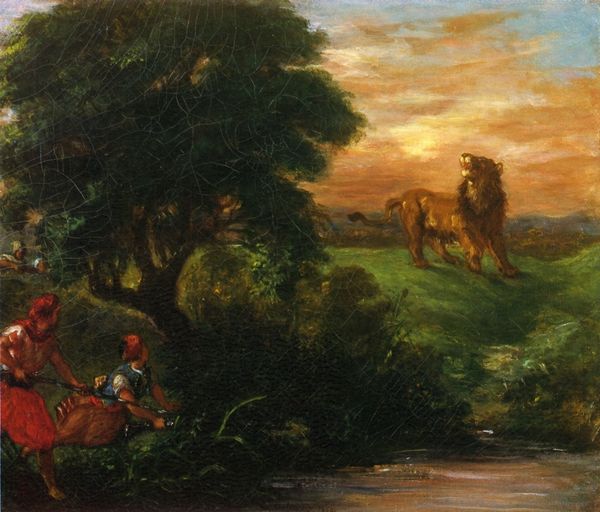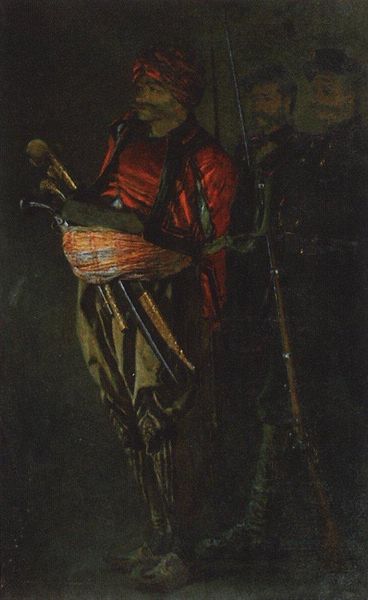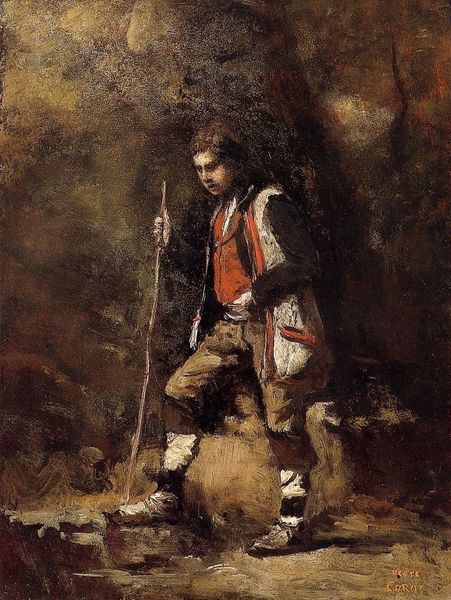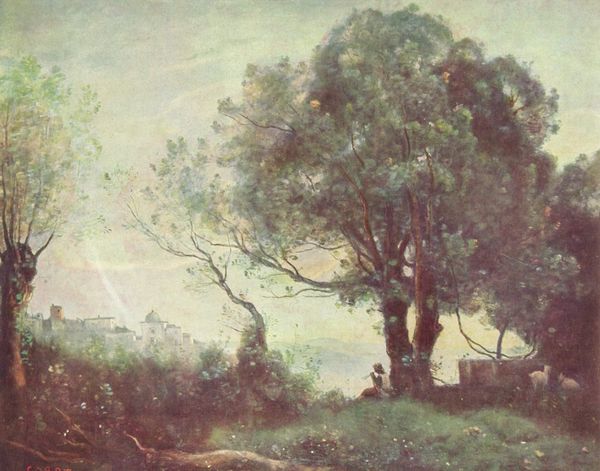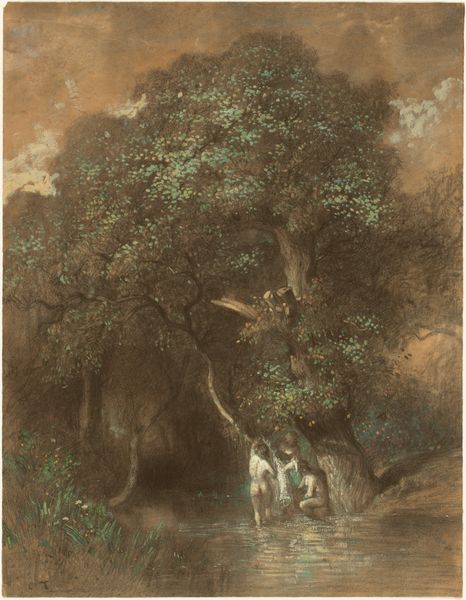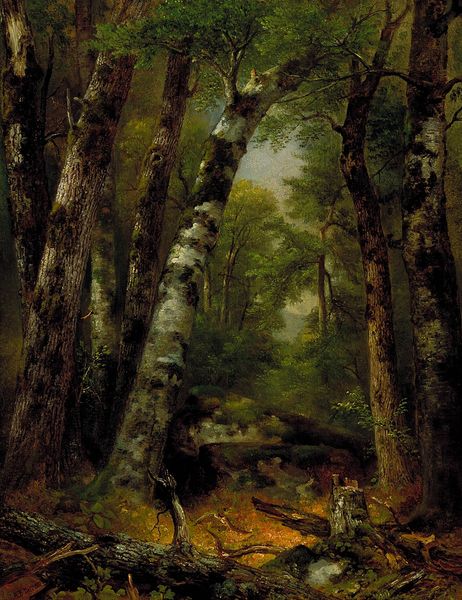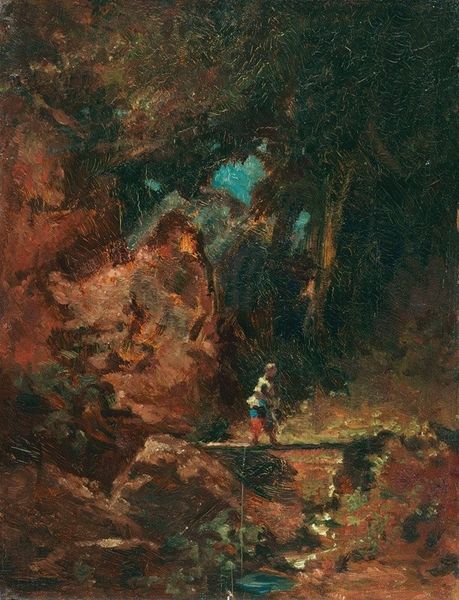
Copyright: Public Domain: Artvee
Curator: This is Arthur Bowen Davies' "Visions of Glory," painted in 1896. Oil paint on canvas. What are your initial thoughts? Editor: There's a dreamlike quality. The palette is almost entirely warm browns and golds, lending an overall sense of nostalgia or faded memory. Curator: It’s interesting to consider how the means of production—the specific paints available in the late 19th century, for example—influenced the chromatic range he was working with. The painting appears like a stage production and that invites exploration. Who produced the set and costume for the leading act here? Editor: Let's deconstruct this further. Compositionally, we have a lone figure, apparently a knight, positioned near the trunk of a large tree. He appears somewhat burdened, though regal. Note the helmet placed on the grass that emphasizes both weight and scale. Curator: Davies came from a working-class background and it's worth remembering his time laboring in factories and as a newspaper illustrator. These experiences absolutely inform his artistic choices and how he viewed production; there is, for instance, a dream of past glories represented here in this figure that echoes many who sought an elevated existence beyond the drudgery of labor. Editor: That brings up an interesting point: the artist has depicted the landscape through very gestural brushstrokes, juxtaposed with the fairly precise detail of the knight's armor. There's a tension between these stylistic approaches that I find intriguing. The golden armor then almost blends to abstraction with the landscape, a dissolving figure against earth. Curator: Right, we have the mass production of that idealized notion, the 'knight in shining armor' in the industrial age, presented almost forlorn, leaning on this symbol of nature. The materiality is a record of both idealized historical narratives and of the lived experience and conditions of the time. Editor: This close-valued tonality truly dominates and really drives home the artist’s intended Romantic affect here. A real interplay with values and scales to evoke the solitary contemplation and drama. Curator: And maybe a contemplation prompted by the changing socio-economic landscapes of the late 19th century, rendered tangible in brushstroke and color? It’s something to consider further. Editor: Absolutely. Davies invites a rich formal investigation that reflects a unique time, full of historical reverberations.
Comments
No comments
Be the first to comment and join the conversation on the ultimate creative platform.
